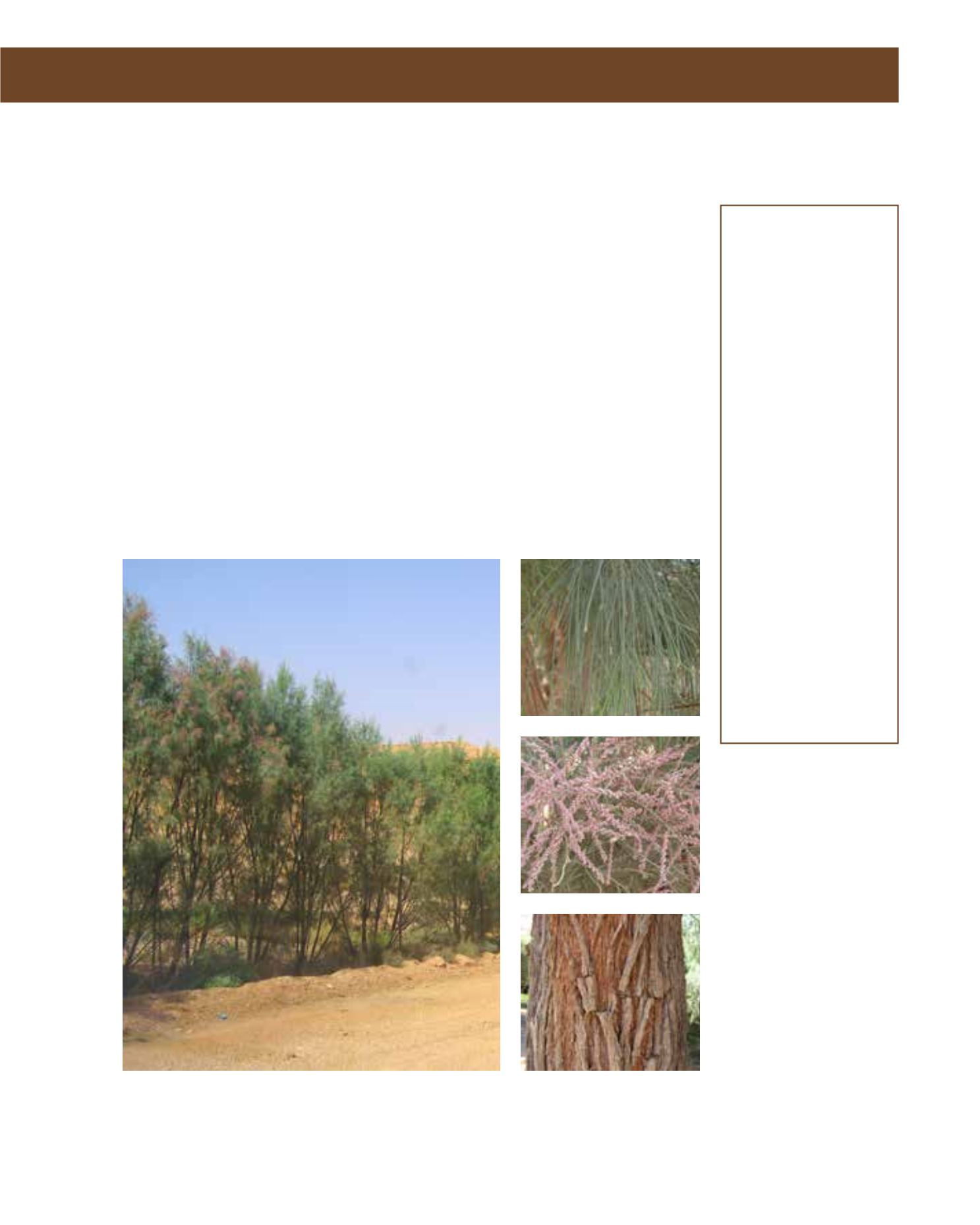

GENERAL
Origin
:
Mediterranean
Vigour
:
fairly fast
growing
Humidity
:
extremely arid,
very arid, semi-
arid, semi-humid
Propagation :
sowing and
pricking out,
cuttings
Maintenance :
moderate
CONDITIONS
Urban climate :
resistant
Dessication :
resistant
Stagnant water :
resistant
Irrigation
:
low
Salinity/ppm :
very high (20000
ppm)
Hardiness
:
-15°C
SHAPE
Type
:
tree, shrub
Height
:
6 m-15 m
Spread
:
6 m-12 m
Foliage
:
deciduous
FLOWER
Colour
:
pale yellow
Size
:
0.6 cm
Period
:
April - June
FRUIT
Type of fruit :
capsule
Fruit size
:
0.5 cm
Tamarix aphylla, known by its common name athel in Arabic, is a shrub or small tree native to
Mediterranean climatic zones from north Africa to southeast Asia. This species, which can be
found throughout Saudi Arabia, reaches a height of between 6 and 15 metres. It is a fast-growing
tree, sometimes confused with Casuarina equisetifolia, since both are planted on farms in the Ar-
riyadh region as a windbreak and to demarcate fields. Its shape is often irregular, multi-stemmed
and crooked. The foliage is deciduous, and from green to light grey in colour. The leaves are
imbricate, entire and squamate. The pale-yellow to pale-pink flowers appear in spring. The single
flower is small, but together in long racemes the flowers stand out on the branches. The fruits are
small capsules with 0.5-mm seeds. Propagation is best by seed, suckers and cuttings. Tamarix
aphylla has a deep, extensive root system. It grows in any soil, especially salt marshes and sandy or
silty soil. This tree is highly salt-tolerant, itself exuding salt, which accumulates in crusted layers
on the foliage and drips onto the ground around the tree. Prone to leaf canker and frost-resistant,
T. aphylla prefers locations next to watercourses, which improves its appearance, growth and
shape. It can be planted as a specimen or dominant plant, and as a hedge. For open country, it is
invaluable as a windbreak, screen and as a coloniser, for slope or river bank stabilisation, hillside
planting and for environmental consolidation. In certain locations, it can become invasive.
292
Tamarix aphylla,
Tamaricaceae
Athel pine,
Salt Cedar, athel
















